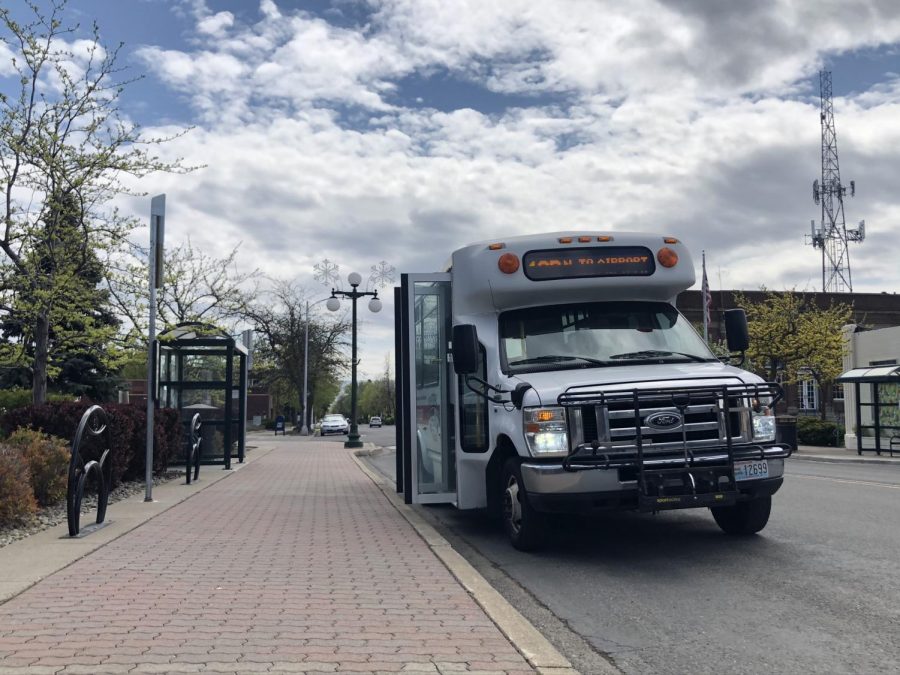City of Ellensburg completes plan for non-motorized transportation
The city of Ellensburg has updated their transportation plan to ensure residents have more options besides motorized vehicles. The city updates this plan roughly every 10 years.
September 27, 2020
The City of Ellensburg released a report by Fehr & Peers, a transportation consulting firm out of Seattle, to implement a plan called The Active Transportation Plan (ATP) on Sept. 8.
The ATP was revised from a 2008 city plan called the Non-Motorized Transportation Plan, Josh Mattson, Ellensburg assistant city engineer, said.
“The plan gets updated about every 10 years,” Mattson said.
When asked how the city got the funding for sidewalks around Ellensburg, Mattson said the city won an award from the Transportation Improvement Board for $50,000 that went towards the ATP.
Through interactive web maps, people in the community were able to submit suggestions on how the city could make things such as sidewalks, streetlights and pedestrian traffic safer for the people to use also adding sidewalks and bike lanes in areas around the city.
“The ATP is a follow up from the original 2017.” Mattson said.
About 700 comments were tracked on the web page offered to the community to use, which processed the data as a heat map that showed the biggest areas of concern. The heat maps showed that the survey showed participation from more areas of families and fewer areas where college students live. Most of the areas were south of campus in areas such as South Willow Street and Capital Street,
“We had signs up on campus on flyer boards and sidewalk signs, but the feedback was not great,” Mattson said.
When asked about why the bike lane in town was put on Seventh Avenue, Mattson said it was intended to keep bike traffic away from University Way because when it was put in, University Way was still only four lanes, not the five that it is today, as well as the less amount of motorized traffic the street has.
According to the report that was done by the firm Fehr & Peers, “Ellensburg has approximately 109 miles of sidewalks. Almost 79% of city streets have sidewalks on one or both sides. As of 2017, the City of Ellensburg offered 8.3 miles of bicycle lanes, 1.3 miles of bicycle boulevards, 2.3 miles of shared pedestrian paths, and 22.4 miles of bicycle routes along low-speed, low-volume residential streets without designated bicycle infrastructure. The Transportation Element identified an additional 2.1 miles in future connections to the bicycle network.”
The ATP held an open house forum on Dec. 9, 2019 on CWU’s campus in coalition with the Washington State Department of Transportation (WSDOT). The state was involved in the city plans to use other data from cities around Washington to help with Ellensburg
On the topic of the meeting time chosen for the town hall potentially being more difficult for college students to attend, Mattson said, “[WSDOT] picked the time, and we joined with them to have an open town hall about it.”
Mattson also said the city is working on furthering some of the streets that lack lighting in certain areas.
“Some streets in town are just older, and it is difficult to put in lights, and some residents don’t want their streets to light up. But when new streets come in, the lighting for those streets is addressed,” Mattson said.
Areas such as Airport Road and Helena Avenue have gotten new sidewalks in the last 10 years with improved lighting, but according to Mattson, some areas on Helena Avenue could not get new sidewalks due to the canal.
When asked about sidewalks around campus, Mattson said those sidewalks and lighting were the responsibility of the university, not the city, but if they intersect with each other, both parties work on it.


